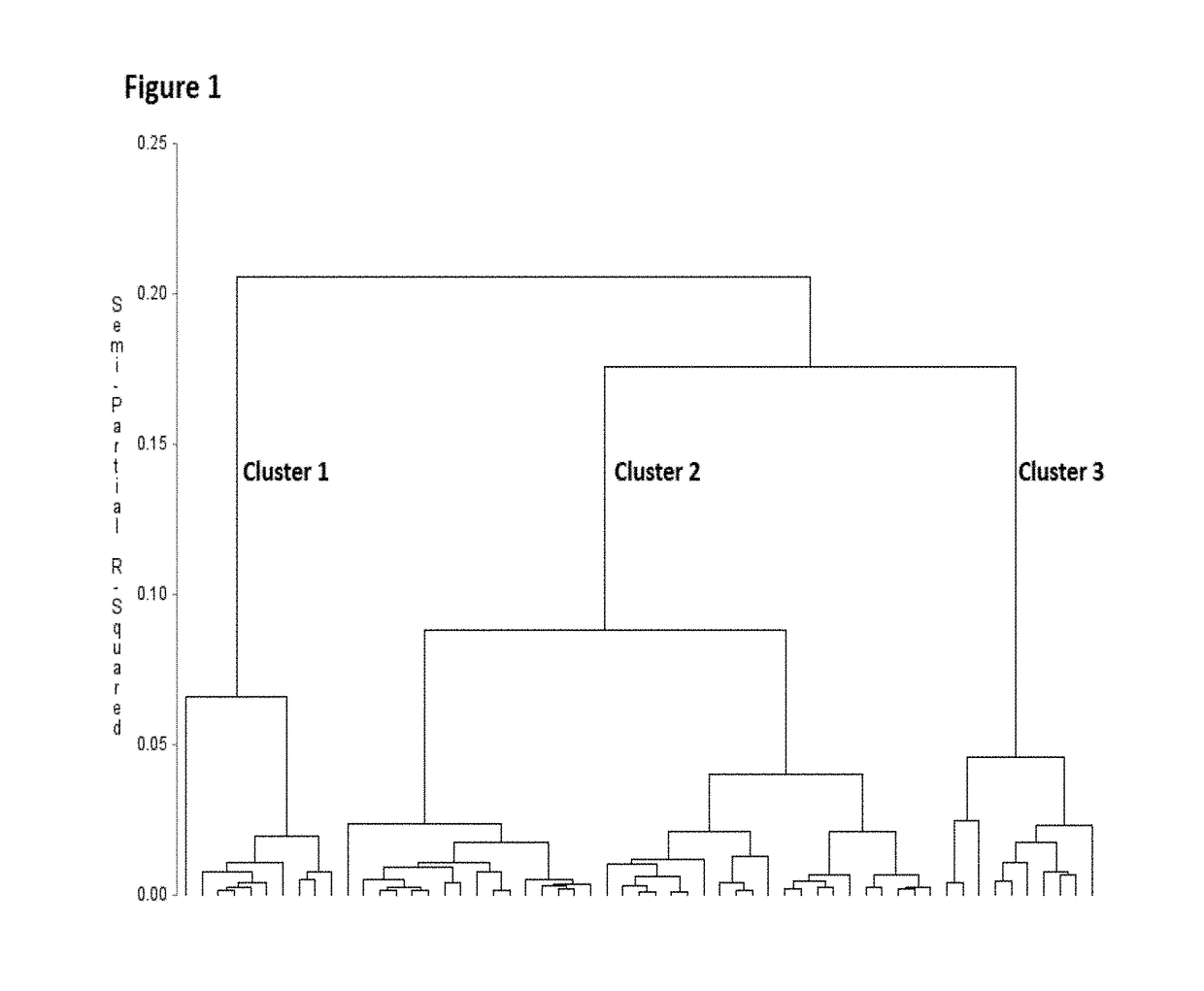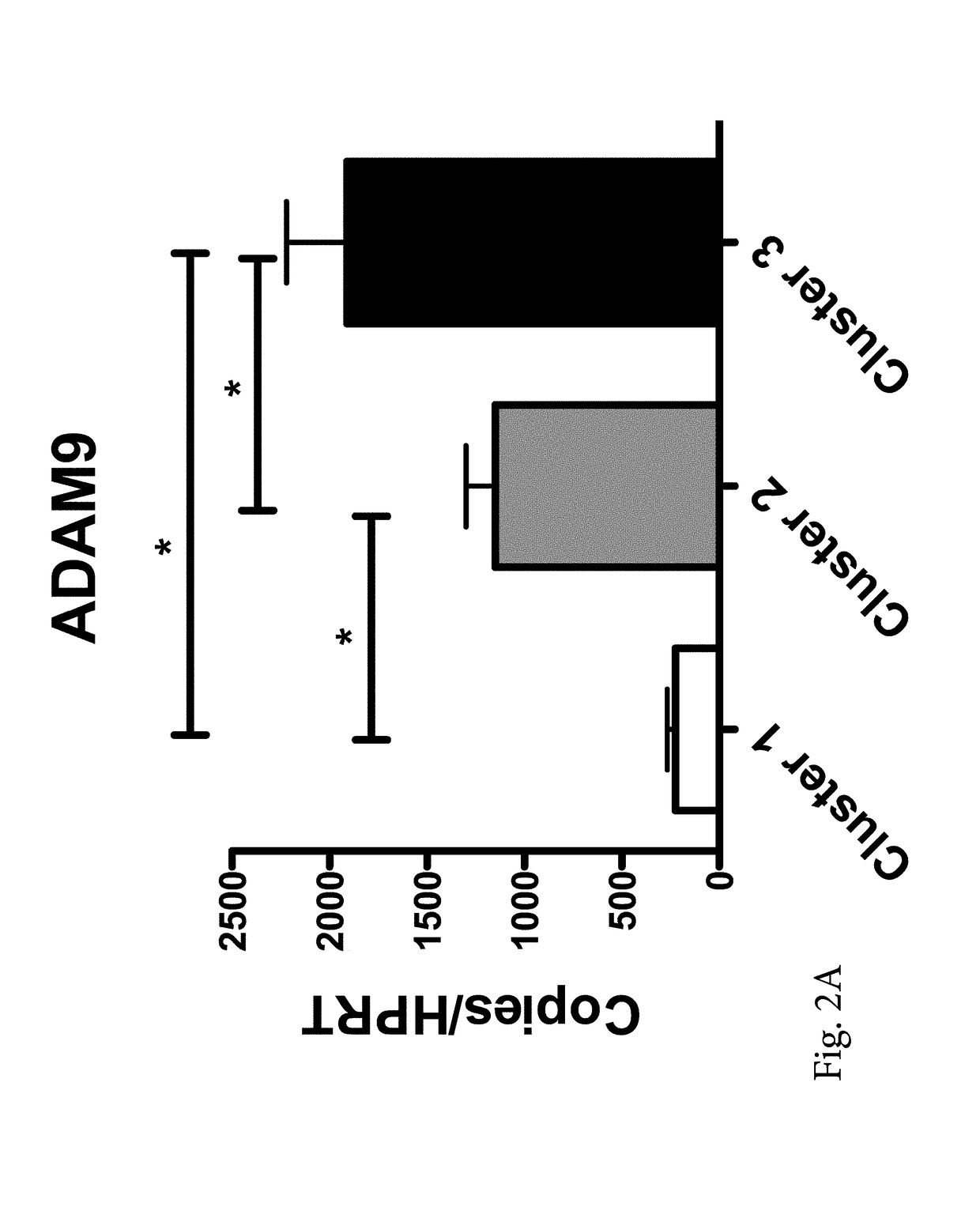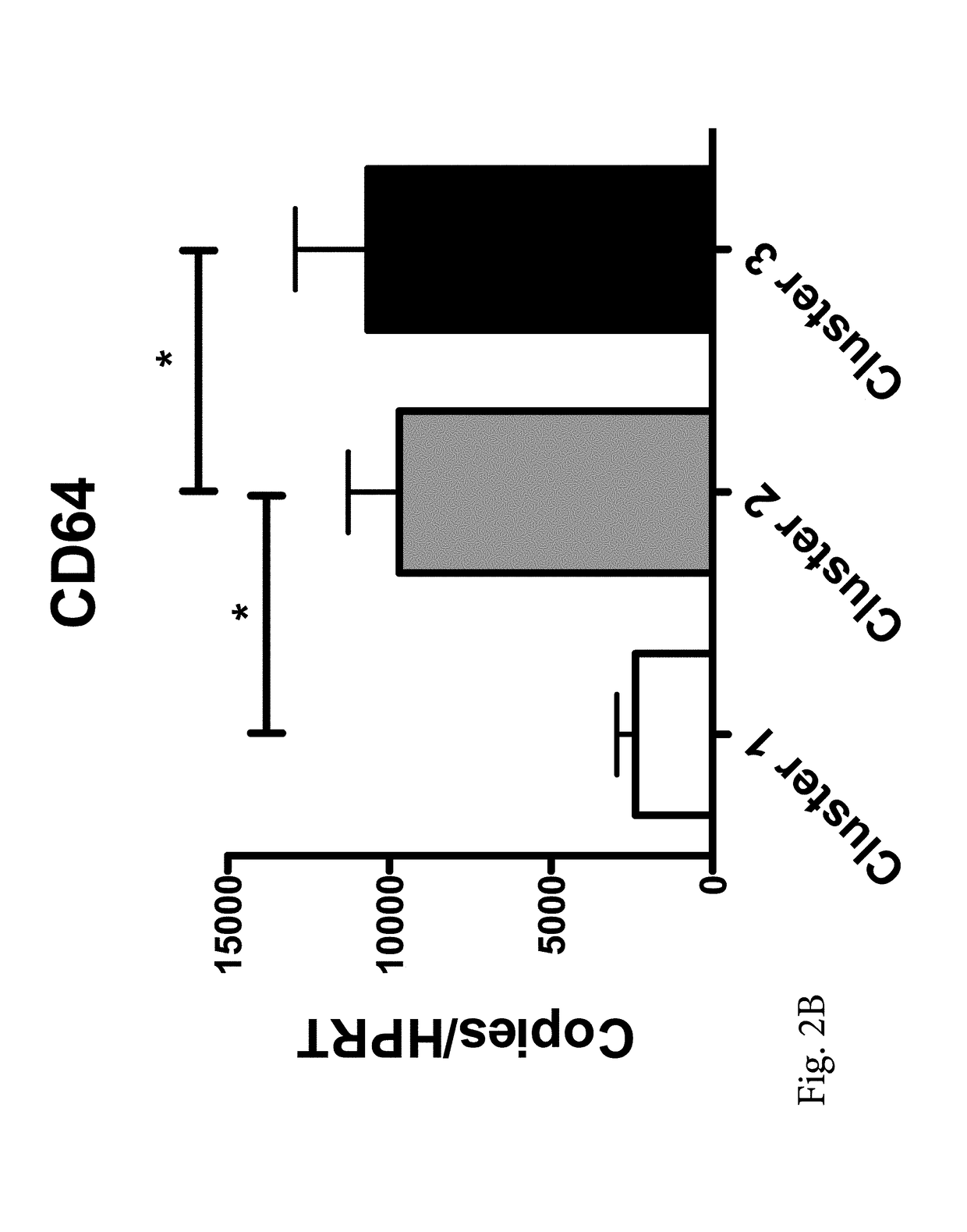Method for treating pulmonary exacerbation and disease progression in subjects having cystic fibrosis
a cystic fibrosis and exacerbation disease technology, applied in the field of cystic fibrosis exacerbation disease progression treatment, can solve the problems of increased morbidity and mortality risk of subjects identified as having an increased risk of pulmonary exacerbation disease progression, and achieve the effect of shortening the exacerbation free time interval
- Summary
- Abstract
- Description
- Claims
- Application Information
AI Technical Summary
Benefits of technology
Problems solved by technology
Method used
Image
Examples
example 1
Cluster Analysis Resulted in Categorization of Exacerbation Samples into Three Subgroups of Subjects Based on Gene Expression
[0057]Three distinct clusters were partitioned and categorized from the data, based on a fixed semi-partial R squared distance of approximately 0.075 between clusters (FIG. 1). Cluster groups were comprised of sample sizes of n=10 (Cluster 1 / mild), n=37 (Cluster 2 / moderate), and n=10 (Cluster 3 / severe). Subjects in cluster 1 were distinguished by significantly lower expression of ADAM9, CD163, and TLR2 compared to those in both clusters 2 and 3 (FIG. 2). The greatest magnitudes of expression differences were seen between Clusters 1 and 3. Cluster 1 expression of ADAM9, CD64, CD163, IL32, HCA112 and TLR2 was significantly different from those subjects in cluster 3. Rank of importance was calculated for the genes which most highly determined cluster membership or category, with the following rank in descending order (with accompanying F statistic from the ANOVA...
example 2
Cluster Assignment and Cross-Sectional Analysis of Systemic Inflammation and Pulmonary Function
[0060]Column graphs in FIG. 3 reflect variations in standard measures of inflammation between the cluster subgroups. WBC and CRP values (both log transformed) were not significantly different between clusters (Bartlett's test for homogeneity of variance across clusters, p=0.73 and 0.89 respectively). Despite a decreasing trend from cluster 1 to cluster 3, FEV1% predicted did not vary significantly between clusters (Bartlett's test for homogeneity of variance, p=0.86). When white blood cell differential counts were compared, neutrophil, lymphocyte and monocyte counts between clusters did differ. Peripheral lymphocyte counts were higher in cluster 1 versus 3 (p=0.0008) and cluster 1 versus 2 (p=0.0008). Peripheral neutrophil percentages were lower in cluster 1 versus 3 (p=0.0008) and cluster 2 versus 3 (p=0.02). No significant differences were found across clusters for peripheral monocyte co...
example 3
Cluster Assignment and Short Term Outcomes after Exacerbation
[0061]To determine whether exacerbation outcomes differed between the three clusters, the subjects' return to baseline FEV1 following treatment was evaluated, which was defined as achievement of >90% of best FEV1 in the year prior to study with treatment. There were no differences between clusters in reaching baseline FEV1 following treatment of exacerbation (p=0.86, Fisher's exact test). Persistent systemic inflammation at treatment end, based on abnormally elevated CRP (>0.4 mg / dL), was compared across clusters. Incidence of elevated post-treatment CRP was not significantly different between clusters (p=0.84, Fisher's exact test). However, significant differences in time to subsequent pulmonary exacerbation occurred between clusters. A survival analysis (FIG. 4) revealed that individuals in Clusters 1 and 2 had longer intervals of exacerbation free time, compared to those individuals in cluster 3 (median times for cluste...
PUM
| Property | Measurement | Unit |
|---|---|---|
| time | aaaaa | aaaaa |
| forced expiratory volume | aaaaa | aaaaa |
| Forced Expiratory Volume | aaaaa | aaaaa |
Abstract
Description
Claims
Application Information
 Login to View More
Login to View More - R&D
- Intellectual Property
- Life Sciences
- Materials
- Tech Scout
- Unparalleled Data Quality
- Higher Quality Content
- 60% Fewer Hallucinations
Browse by: Latest US Patents, China's latest patents, Technical Efficacy Thesaurus, Application Domain, Technology Topic, Popular Technical Reports.
© 2025 PatSnap. All rights reserved.Legal|Privacy policy|Modern Slavery Act Transparency Statement|Sitemap|About US| Contact US: help@patsnap.com



